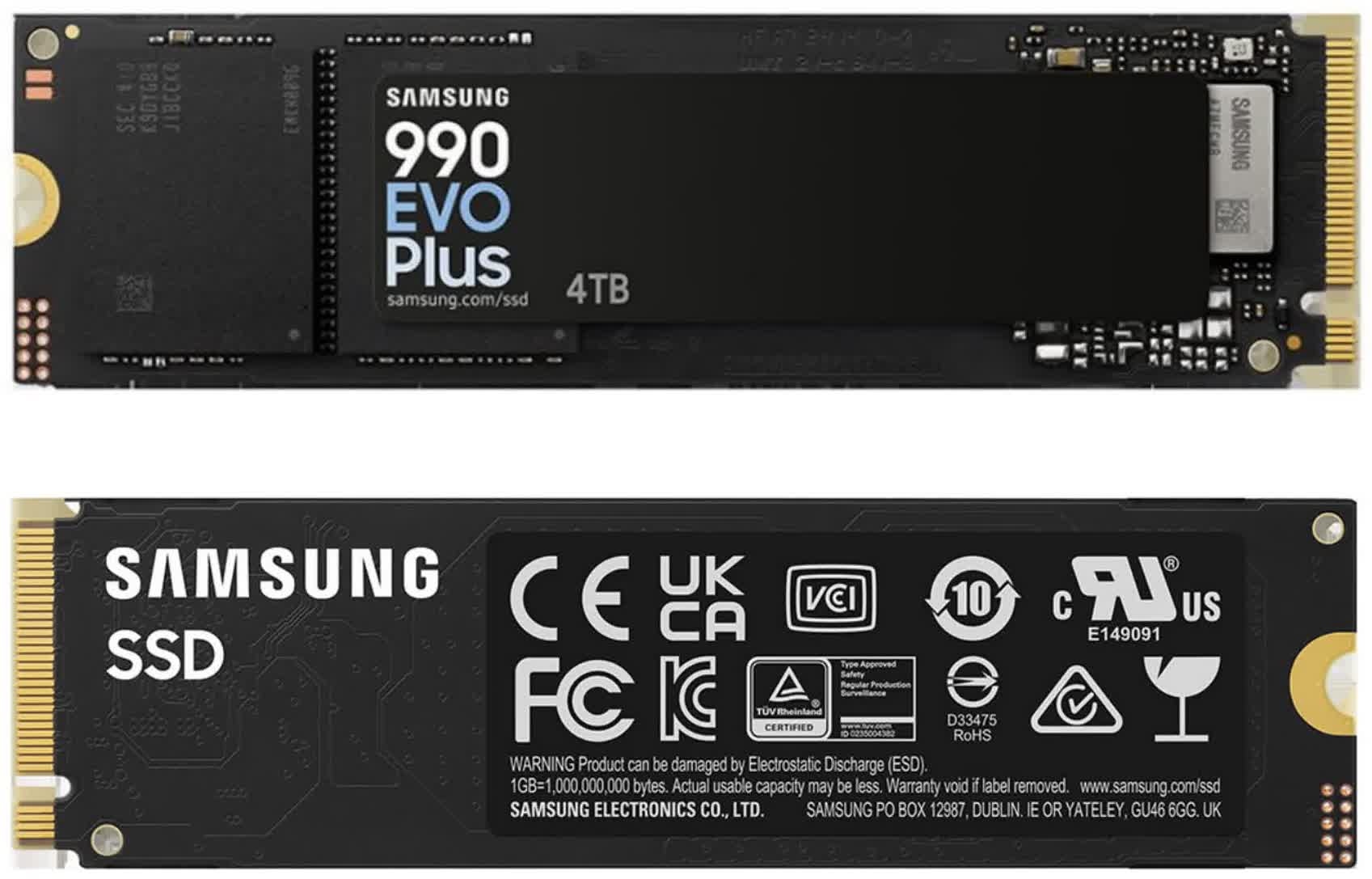Posts: 1,332 +401
In a nutshell: After refreshing the Evo line of NVMe SSDs earlier this year, Samsung is now introducing another upgrade for storage-hungry customers: the 990 Evo Plus drives. Samsung assures that these drives are not only very fast but also reliable and power efficient.

There's a new Samsung SSD in town that nearly matches the maximum data throughput provided by the PCI Express 4.0 interface. The new 990 Evo Plus solid-state drives are said to be 50 percent faster than the previously introduced 990 Evo models, although they utilize the same PCIe Gen 4 (x4) or Gen 5 (x2) interface within a traditional M.2 (2280) form factor.
The 990 Evo Plus SSDs offer sequential read speeds of up to 7,250 MB/s and write speeds of up to 6,300 MB/s. Samsung states that the 50 percent performance improvement compared to the 990 Evo is made possible by the latest 8th generation V-NAND (3-bit TLC) technology used in the drives, along with an in-house controller manufactured on a 5-nm process.
The 4TB model of the 990 Evo Plus delivers best-in-class random input/output operations per second (IOPS), achieving 1,050K IOPS for random read and 1,400K IOPS for random write speeds, according to the South Korean giant. The company touts this "remarkable feat," which nearly rivals the performance of SSDs that use DRAM memory chips, despite the 990 Evo Plus not employing any DRAM-based cache at all.

The new 990 Evo Plus would be an ideal hardware purchase for customers interested in gaming, AI tasks, and other applications requiring high storage performance, according to Samsung.
James Fishler, SVP of Samsung Electronics America, stated that the average user now produces more than 100 megabytes of data every minute while capturing new photos, editing videos, or gaming on dedicated consoles.
In addition to performance, the 990 Evo Plus line of SSDs features a novel nickel-coated heat shield designed to minimize overheating issues, thereby improving data transfer performance over extended periods. Samsung noted that the new heat shield delivers 73 percent greater power efficiency compared to the 990 Evo drives.
While not entirely new, the line includes support for Samsung TurboWrite 2.0, which was first introduced with the SSD 980 NVMe drives and has now been revamped for maximized performance. This technology can accelerate transfer speeds and reduce lag, improving data management when handling larger files.
The 990 Evo Plus SSD line includes 1TB, 2TB, and 4TB drives, all backed by a five-year limited warranty. Full-disk data encryption is achieved through an AES 256-bit algorithm, while Samsung's Magician Software provides additional tools for managing the drives. MSRPs range from $110 for the 1TB model to $345 for the 4TB model.
Samsung launches 990 Evo Plus NVMe SSDs with enhanced speed and thermal performance